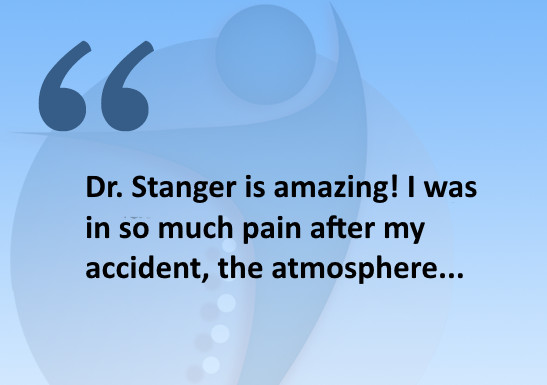
Medication Management
Epidural steroid injections
Epidural steroid injections (ESIs) are a common treatment option for many forms of low back pain and leg pain. They have been used for low back problems since 1952 and are still an integral part of the non-surgical management of sciatica and low back pain. The goal of the injection is pain relief; at times the injection alone is sufficient to provide relief, but commonly an epidural steroid injection is used in combination with a comprehensive rehabilitation program to provide additional benefit.
Most practitioners will agree that, while the effects of the injection tend to be temporary – providing relief from pain for one week up to one year – an epidural can be very beneficial for a patient during an acute episode of back and/or leg pain. Importantly, an injection can provide sufficient pain relief to allow a patient to progress with a rehabilitative stretching and exercise program. If the initial injection is effective for a patient, he or she may have up to three in a one-year period. In addition to the low back (the lumbar region), epidural steroid injections are used to ease pain experienced in the neck (cervical) region and in the mid spine (thoracic) region. Epidural injections in the low back area used to treat low back pain and radicular pain (also referred to as leg pain or sciatica).
Epidural Injection Procedure
The epidural steroid injection procedure takes place in a surgery center, hospital, or a physician’s clinic. Many types of physicians can be qualified to perform an epidural steroid injection, including an anesthesiologist, radiologist, neurologist, physiatrist and surgeon.
An epidural steroid injection delivers steroids directly into the epidural space in the spine. Sometimes additional fluid (local anesthetic and/or a normal saline solution) is used to help ‘flush out’ inflammatory mediators from around the area that may be a source of pain.
The epidural space encircles the dural sac and is filled with fat and small blood vessels. The dural sac surrounds the spinal cord, nerve roots, and cerebrospinal fluid (the fluid that the nerve roots are bathed in).
Typically, a solution containing cortisone (steroid) with local anesthetic (lidocaine or bupivacaine), and/or saline is used.
- A steroid, or cortisone, is usually injected as an anti-inflammatory agent. Inflammation is a common component of many low back conditions and reducing inflammation helps reduce pain. Triamcinolone acetonide, Dexamethasone, and Methylprednisolone acetate are commonly used steroids.
- Lidocaine (also referred to as Xylocaine) is a fast-acting local anesthetic used for temporary pain relief. Bupivacaine, a longer lasting medication, may also be used. Although primarily used for pain relief, these local anesthetics also act as ‘flushing’ agents to dilute the chemical or immunologic agents that promote inflammation.
- Steroids inhibit the inflammatory response caused by chemical and mechanical sources of pain. Steroids also work by reducing the activity of the immune system to react to inflammation associated with nerve or tissue damage. A typical immune response is the body generating white blood cells and chemicals to protect it against infection and foreign substances such as bacteria and viruses. Inhibiting the immune response with an epidural steroid injection can reduce the pain associated with inflammation.
Indications for a Lumbar Epidural Steroid Injections :
Several common conditions that cause severe acute or chronic low back pain and/or leg pain (sciatica) from nerve irritation can be treated by steroid injections. These conditions include:
- Lumbar disc herniation, where the nucleus of the disc pushes through the outer ring (the annulus) and into the spinal canal where it pressures the spinal cord and nerves. Read Lumbar herniated disc for more information on diagnosis and treatments.
- Degenerative disc disease, where the collapse of the disc space may impinge on nerves in the lower back. See Lumbar degenerative disc disease.
- Lumbar spinal stenosis, a narrowing of the spinal canal that literally chokes off /pinches nerves and the spinal cord, causing significant pain.
- Annular tear, a painful condition where a tear is present in the outer layer of the disc
Epidural steroid injections
Epidural steroid injections (ESIs) are a common treatment option for many forms of low back pain and leg pain. They have been used for low back problems since 1952 and are still an integral part of the non-surgical management of sciatica and low back pain. The goal of the injection is pain relief; at times the injection alone is sufficient to provide relief, but commonly an epidural steroid injection is used in combination with a comprehensive rehabilitation program to provide additional benefit.
Most practitioners will agree that, while the effects of the injection tend to be temporary – providing relief from pain for one week up to one year – an epidural can be very beneficial for a patient during an acute episode of back and/or leg pain. Importantly, an injection can provide sufficient pain relief to allow a patient to progress with a rehabilitative stretching and exercise program. If the initial injection is effective for a patient, he or she may have up to three in a one-year period. In addition to the low back (the lumbar region), epidural steroid injections are used to ease pain experienced in the neck (cervical) region and in the mid spine (thoracic) region. Epidural injections in the low back area used to treat low back pain and radicular pain (also referred to as leg pain or sciatica).
Epidural Injection Procedure
The epidural steroid injection procedure takes place in a surgery center, hospital, or a physician’s clinic. Many types of physicians can be qualified to perform an epidural steroid injection, including an anesthesiologist, radiologist, neurologist, physiatrist and surgeon.
An epidural steroid injection delivers steroids directly into the epidural space in the spine. Sometimes additional fluid (local anesthetic and/or a normal saline solution) is used to help ‘flush out’ inflammatory mediators from around the area that may be a source of pain.
The epidural space encircles the dural sac and is filled with fat and small blood vessels. The dural sac surrounds the spinal cord, nerve roots, and cerebrospinal fluid (the fluid that the nerve roots are bathed in).
Typically, a solution containing cortisone (steroid) with local anesthetic (lidocaine or bupivacaine), and/or saline is used.
- A steroid, or cortisone, is usually injected as an anti-inflammatory agent. Inflammation is a common component of many low back conditions and reducing inflammation helps reduce pain. Triamcinolone acetonide, Dexamethasone, and Methylprednisolone acetate are commonly used steroids.
- Lidocaine (also referred to as Xylocaine) is a fast-acting local anesthetic used for temporary pain relief. Bupivacaine, a longer lasting medication, may also be used. Although primarily used for pain relief, these local anesthetics also act as ‘flushing’ agents to dilute the chemical or immunologic agents that promote inflammation.
- Steroids inhibit the inflammatory response caused by chemical and mechanical sources of pain. Steroids also work by reducing the activity of the immune system to react to inflammation associated with nerve or tissue damage. A typical immune response is the body generating white blood cells and chemicals to protect it against infection and foreign substances such as bacteria and viruses. Inhibiting the immune response with an epidural steroid injection can reduce the pain associated with inflammation.
Indications for a Lumbar Epidural Steroid Injections :
Several common conditions that cause severe acute or chronic low back pain and/or leg pain (sciatica) from nerve irritation can be treated by steroid injections. These conditions include:
- Lumbar disc herniation, where the nucleus of the disc pushes through the outer ring (the annulus) and into the spinal canal where it pressures the spinal cord and nerves. Read Lumbar herniated disc for more information on diagnosis and treatments.
- Degenerative disc disease, where the collapse of the disc space may impinge on nerves in the lower back. See Lumbar degenerative disc disease.
- Lumbar spinal stenosis, a narrowing of the spinal canal that literally chokes off /pinches nerves and the spinal cord, causing significant pain.
- Annular tear, a painful condition where a tear is present in the outer layer of the disc
Call Now For More Information About
Stanger Injury Centers
Get Your Free Consultation
Get Your Free Consultation
READ OUR PATIENT TESTIMONIALS
Auto Accident Victims Discover Personal Recovery Success
Auto Accident Victims Discover Personal Recovery Success






